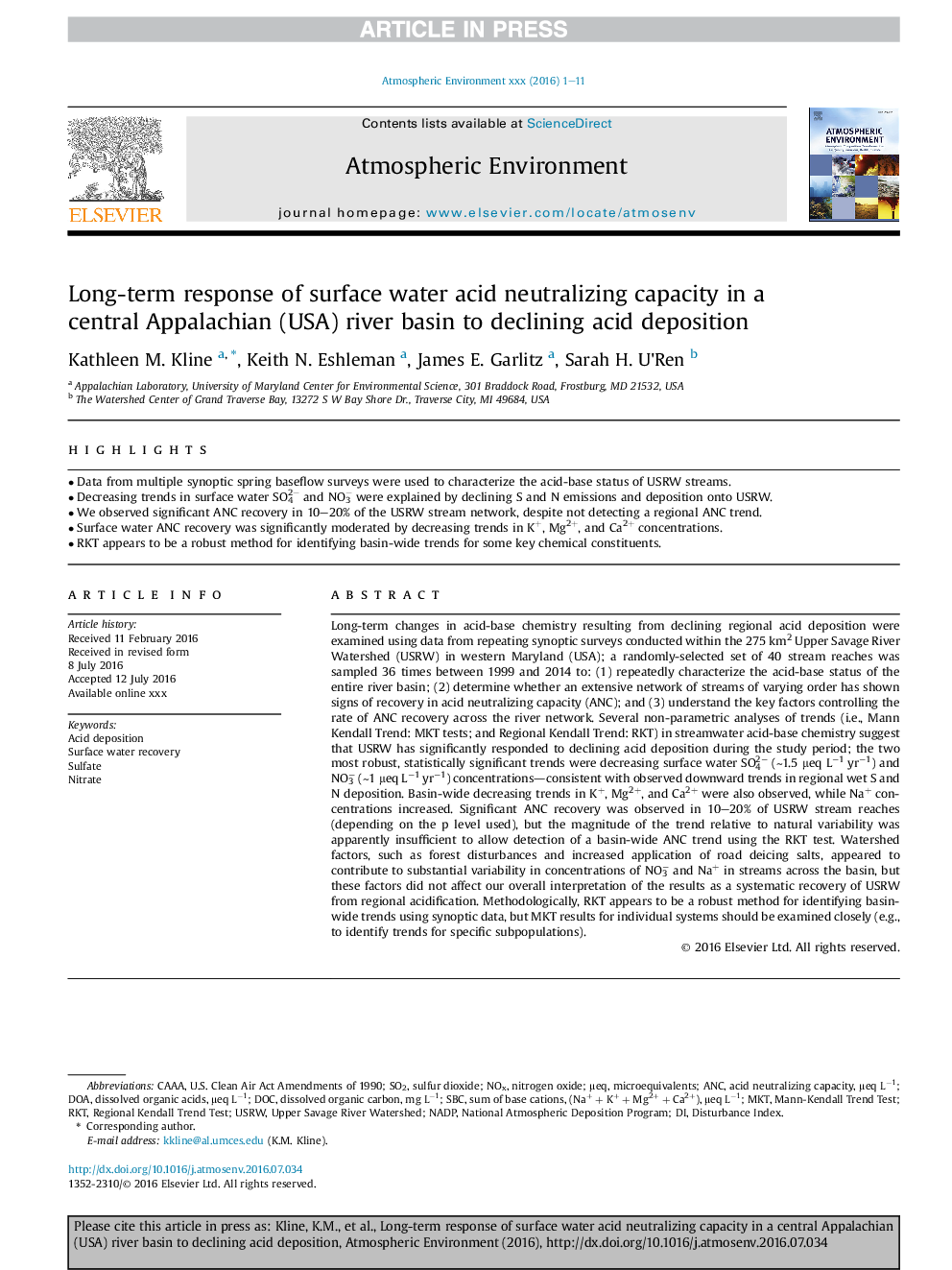| Article ID | Journal | Published Year | Pages | File Type |
|---|---|---|---|---|
| 5753274 | Atmospheric Environment | 2016 | 11 Pages |
Abstract
Long-term changes in acid-base chemistry resulting from declining regional acid deposition were examined using data from repeating synoptic surveys conducted within the 275 km2 Upper Savage River Watershed (USRW) in western Maryland (USA); a randomly-selected set of 40 stream reaches was sampled 36 times between 1999 and 2014 to: (1) repeatedly characterize the acid-base status of the entire river basin; (2) determine whether an extensive network of streams of varying order has shown signs of recovery in acid neutralizing capacity (ANC); and (3) understand the key factors controlling the rate of ANC recovery across the river network. Several non-parametric analyses of trends (i.e., Mann Kendall Trend: MKT tests; and Regional Kendall Trend: RKT) in streamwater acid-base chemistry suggest that USRW has significantly responded to declining acid deposition during the study period; the two most robust, statistically significant trends were decreasing surface water SO42â (â¼1.5 μeq Lâ1 yrâ1) and NO3â (â¼1 μeq Lâ1 yrâ1) concentrations-consistent with observed downward trends in regional wet S and N deposition. Basin-wide decreasing trends in K+, Mg2+, and Ca2+ were also observed, while Na+ concentrations increased. Significant ANC recovery was observed in 10-20% of USRW stream reaches (depending on the p level used), but the magnitude of the trend relative to natural variability was apparently insufficient to allow detection of a basin-wide ANC trend using the RKT test. Watershed factors, such as forest disturbances and increased application of road deicing salts, appeared to contribute to substantial variability in concentrations of NO3â and Na+ in streams across the basin, but these factors did not affect our overall interpretation of the results as a systematic recovery of USRW from regional acidification. Methodologically, RKT appears to be a robust method for identifying basin-wide trends using synoptic data, but MKT results for individual systems should be examined closely (e.g., to identify trends for specific subpopulations).
Keywords
Related Topics
Physical Sciences and Engineering
Earth and Planetary Sciences
Atmospheric Science
Authors
Kathleen M. Kline, Keith N. Eshleman, James E. Garlitz, Sarah H. U'Ren,
